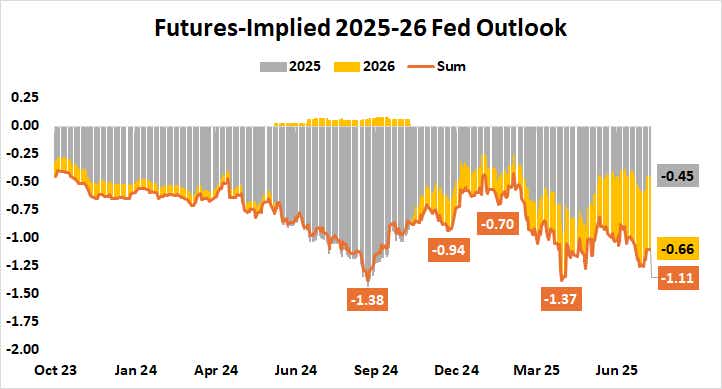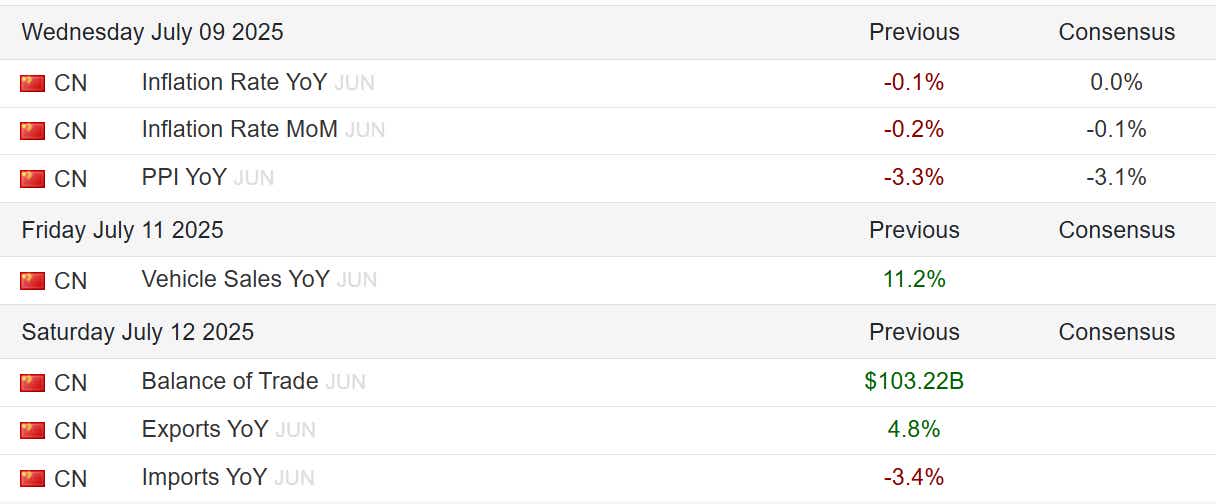Macro Week Ahead: Can Market Cheer Hold Up as Traders Clash with the Fed?

Macro Week Ahead: Can Market Cheer Hold Up as Traders Clash with the Fed?
By:Ilya Spivak
Traders cheered US jobs data, despite mixed results. Will the cheery mood hold up as the Fed and markets clash?
- Markets cheered US labor market data despite mixed cues questioning jobs growth
- June FOMC meeting minutes eyed as bond markets and Fed officials clash on rates
- China inflation and trade figures set to show the economy continues to look anemic
Stock markets continued to push higher last week. Despite a slowdown in momentum from the prior week, the bellwether S&P 500 and the tech-minded Nasdaq 100 both set new record highs. Most of the rally came on Thursday, the last day of trade before Friday’s holiday closure, as US jobs data appeared to top analysts’ forecasts.
June’s report from the Bureau of Labor Statistics (BLS) showed the economy added 147,000 jobs last month, beating expectations calling for 110,000. May’s result was also revised narrowly higher to a rise of 144,000, from the initially reported 139,000. The jobless rate unexpectedly ticked down to 4.1%.
The headline data seems to be less than meets the eye. The two-month revision finalizing the results for April and May brought a cumulative downgrade of 95,000 jobs. Meanwhile, the lower unemployment rate appeared to be explained by a decline labor force participation rather than a pickup in demand.
Nevertheless, traders seemed to take the numbers at face value. Treasury bonds fell as yields and the US dollar rose after the report’s release, suggesting that traders took the figures as likely to diminish scope for Fed interest rate cuts this year. That stocks rallied in tandem suggests markets extracted a positive growth signal from the data.
Against this backdrop, here are the key macro waypoints to consider in the days ahead.
Federal Open Market Committee (FOMC) meeting minutes
Despite the response to last week’s US economic data, the markets continue to nurse a more dovish perspective on monetary policy than that of the Federal Reserve. In June, the central bank’s rate-setting FOMC committee projected 75 basis points (bps) in cuts through year-end 2026. Fed Funds futures now price in 111bps.
This week, minutes from last month’s FOMC meeting will help illustrate where the US central bank is coming from. A familiar narrative seems likely: neither inflation nor employment seem to be screaming for immediate attention, leaving policymakers with room to wait until the impact of tariff-related influences becomes clearer.

China inflation and trade data
Meanwhile, this week’s data offering from China looks likely to produce evidence of ongoing malaise in the world’s second-largest economy. Consumer price index (CPI) figures are expected to put headline inflation at 0.0% year-on-year. Trade numbers due over the weekend will offer a view on how tariff front-running stacks up against domestic demand.
China’s economy has been stuck in a deflationary trap for eight consecutive quarters. That makes it unable to offset any would-be economic downturn in the US, especially while the Eurozone growth remains near standstill. The three economies account for a hefty 58% of global output, but weakness outside the US makes for a single point of failure.

Ilya Spivak, tastylive head of global macro, has 15 years of experience in trading strategy, and he specializes in identifying thematic moves in currencies, commodities, interest rates and equities. He hosts #Macro Money and co-hosts Overtime, Monday-Thursday. @Ilyaspivak
For live daily programming, market news and commentary, visit #tastylive or the YouTube channels tastylive (for options traders), and tastyliveTrending for stocks, futures, forex & macro.
Trade with a better broker, open a tastytrade account today. tastylive, Inc. and tastytrade, Inc. are separate but affiliated companies.
Options involve risk and are not suitable for all investors. Please read Characteristics and Risks of Standardized Options before deciding to invest in options.
tastylive content is created, produced, and provided solely by tastylive, Inc. (“tastylive”) and is for informational and educational purposes only. It is not, nor is it intended to be, trading or investment advice or a recommendation that any security, futures contract, digital asset, other product, transaction, or investment strategy is suitable for any person. Trading securities, futures products, and digital assets involve risk and may result in a loss greater than the original amount invested. tastylive, through its content, financial programming or otherwise, does not provide investment or financial advice or make investment recommendations. Investment information provided may not be appropriate for all investors and is provided without respect to individual investor financial sophistication, financial situation, investing time horizon or risk tolerance. tastylive is not in the business of transacting securities trades, nor does it direct client commodity accounts or give commodity trading advice tailored to any particular client’s situation or investment objectives. Supporting documentation for any claims (including claims made on behalf of options programs), comparisons, statistics, or other technical data, if applicable, will be supplied upon request. tastylive is not a licensed financial adviser, registered investment adviser, or a registered broker-dealer. Options, futures, and futures options are not suitable for all investors. Prior to trading securities, options, futures, or futures options, please read the applicable risk disclosures, including, but not limited to, the Characteristics and Risks of Standardized Options Disclosure and the Futures and Exchange-Traded Options Risk Disclosure found on tastytrade.com/disclosures.
tastytrade, Inc. ("tastytrade”) is a registered broker-dealer and member of FINRA, NFA, and SIPC. tastytrade was previously known as tastyworks, Inc. (“tastyworks”). tastytrade offers self-directed brokerage accounts to its customers. tastytrade does not give financial or trading advice, nor does it make investment recommendations. You alone are responsible for making your investment and trading decisions and for evaluating the merits and risks associated with the use of tastytrade’s systems, services or products. tastytrade is a wholly-owned subsidiary of tastylive, Inc.
tastytrade has entered into a Marketing Agreement with tastylive (“Marketing Agent”) whereby tastytrade pays compensation to Marketing Agent to recommend tastytrade’s brokerage services. The existence of this Marketing Agreement should not be deemed as an endorsement or recommendation of Marketing Agent by tastytrade. tastytrade and Marketing Agent are separate entities with their own products and services. tastylive is the parent company of tastytrade.
tastyfx, LLC (“tastyfx”) is a Commodity Futures Trading Commission (“CFTC”) registered Retail Foreign Exchange Dealer (RFED) and Introducing Broker (IB) and Forex Dealer Member (FDM) of the National Futures Association (“NFA”) (NFA ID 0509630). Leveraged trading in foreign currency or off-exchange products on margin carries significant risk and may not be suitable for all investors. We advise you to carefully consider whether trading is appropriate for you based on your personal circumstances as you may lose more than you invest.
tastycrypto is provided solely by tasty Software Solutions, LLC. tasty Software Solutions, LLC is a separate but affiliate company of tastylive, Inc. Neither tastylive nor any of its affiliates are responsible for the products or services provided by tasty Software Solutions, LLC. Cryptocurrency trading is not suitable for all investors due to the number of risks involved. The value of any cryptocurrency, including digital assets pegged to fiat currency, commodities, or any other asset, may go to zero.
© copyright 2013 - 2025 tastylive, Inc. All Rights Reserved. Applicable portions of the Terms of Use on tastylive.com apply. Reproduction, adaptation, distribution, public display, exhibition for profit, or storage in any electronic storage media in whole or in part is prohibited under penalty of law, provided that you may download tastylive’s podcasts as necessary to view for personal use. tastylive was previously known as tastytrade, Inc. tastylive is a trademark/servicemark owned by tastylive, Inc.